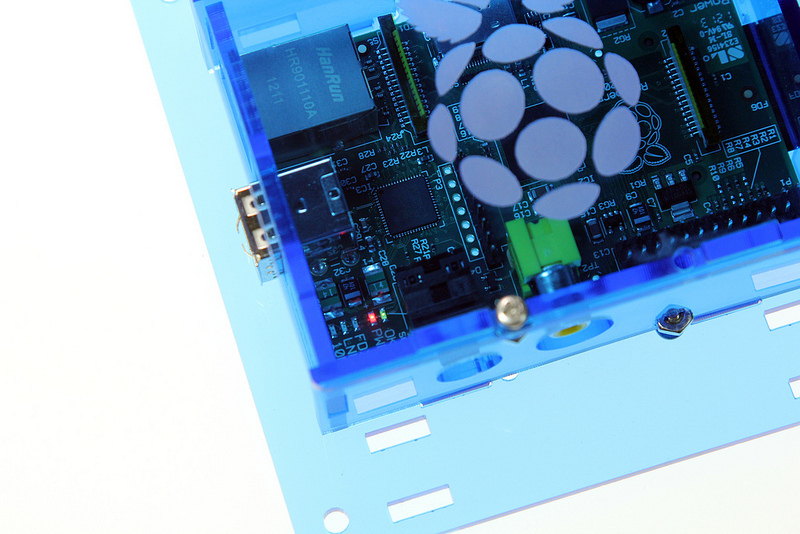Kick Now! The future is closer with Kickstarter

(c) Solarbotics via Visual Hunt / CC BY The
new edition of the weekly magazine tells about promising DIY crowds and DIY hobbies. Amenities: an ideal Wi-Fi antenna for two bands; talking board for developers; a set of wearable smart lighting and a bit of Raspberry Pi.
The biquad yagi antenna

A seemingly strange, home-made English modeller is nothing more than a Yagi directional antenna . The author is widely known in foreign dronovodov circles thanks to a detailed video about the effectiveness of various antennas. This project is aimed at simultaneous operation in two frequencies - 2.4 and 5.8 GHz (control and video broadcasting). The design promises a gain of around 18 dB. Very good antenna for long-range quadcopter flights.
The author of the project
Participate
HubPiWi Blue

Another expansion card for the Raspberry Pi , this time for Zero . Onboard there are Wi-Fi, Bluetooth and 3 USB modules - a gentlemanly set of interfaces that equalize the capabilities of the younger version of the Pi Pi with full options.
Participate
Whoa board

An open platform for prototyping wearable electronics using electroluminescent components. At the heart of the set is a motherboard of the same name, on which are placed microUSB for communication with a computer, a switch and 4 connectors for connecting electroluminescent tapes, plates and sensors. Depending on the purpose of the project, they can serve as sensors or indicator lights.
Work with the periphery is conducted in 4 independent channels, and does not require additional software or hardware. For greater flexibility, Whoa Board is compatible with Arduino , supports work with UART, SPI and I2C. And via microUSB you can output a MIDI signal. Project source codes are available on GitHub .
Participate
Teensy 3.5 & 3.6

The continuation of a fairly well-known line of compact platforms on the Cortex M 4, with support for the Arduino IDE and low power consumption. On board there is:
- 62 I / O pins;
- 25 analog inputs / 2 output;
- 20 PWM;
- microUSB (12 Mbps);
- Ethernet (100 Mbps);
- microSD;
- I2S;
- 6 serial ports;
- 3 SPI;
- 3 I2C;
- real time clock
Version 3.5 is equipped with a 120 MHz processor and operates from 5 V. Version 3.6 has a more powerful processor at 180 MHz, but requires 3.3 volts power. Both options are compatible with previous generations of the project, and (according to the developer, of course), will allow you to deploy existing projects.
Participate
ReSpeaker

Another interesting project for developers of "smart" electronics and home-made lovers: a platform for developing voice-controlled home devices. Concurrently, an IoT controller that controls other components of a smart home.
The main difference between ReSpeaker from many competitors is an open platform and support for all the most popular voice command recognition APIs. Moreover, the device can work both online via the Wi-Fi module (MT7688) and in offline modes. The first out of the box is available to work with Microsoft Cognitive Service , Amazon Alexa Voice Service , Google Speech API , Witai and Houndify. Without an Internet connection, the project processes the voice using the integrated PocketSphinx .
The system consists of three components: the main board ReSpeaker Core, an additional with an array of digital microphones, an expansion card with additional interfaces and a speaker to create a complete project. The main one contains an analog microphone for receiving commands, a debugging microUSB, a DAC with amplifier ( Cirrus Logic WM8960 ) , slot for microSD-card and a few blocks to connect with other devices. An additional board with microphones allows you to recognize voice at a distance of up to 10 meters.
To simplify the programming and configuration process, developers plan to release their own mobile application for managing the card.
Participate
PS How to buy on Kickstarter using Pochtoy.com
All of the above can be brought using our service for sending goods from the United States. To do this, you need to register on our website, and get a virtual address.
It is on him and need to arrange the goods on Kickstarter. When arriving at the warehouse, an alert will come - all that remains is to choose a delivery method, pay for it and receive it at the nearest post office or right at home.
In the event that Kickstarter does not allow you to pay with your own card, you can use the American Pochtoy.com accounts using the “ Full Escort ” service, which you can read about in detail here .
